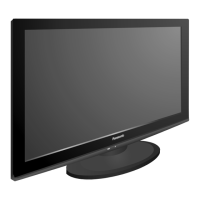
Do you have a question about the Panasonic TC-32LX14 - 31.5" LCD TV and is the answer not in the manual?
| Screen Size | 31.5 inches |
|---|---|
| Display Type | LCD |
| Resolution | 1366 x 768 |
| Aspect Ratio | 16:9 |
| Brightness | 450 cd/m² |
| Contrast Ratio | 1000:1 |
| Viewing Angle | 170° (H) / 170° (V) |
| HDMI Ports | 2 |
| USB Ports | 0 |
| Response Time | 8 ms |
| Speakers | 2 x 10W |
| Input Ports | HDMI, Composite, Component |
Essential safety precautions to follow when using the TV and its accessories.
Ensuring proper airflow around the TV for reliable operation and to prevent overheating.
Guidelines for proper grounding of CATV cable systems.
Safety advice regarding children and flat-screen TVs, emphasizing secure placement.
Recommendations for secure setup and use of the TV, including proper installation.
Guidelines for safely mounting the TV on a wall, including required precautions.
FCC compliance notice regarding shielded cables and modifications.
FCC compliance statement for specific model numbers.
List of standard accessories included with the TV for setup and operation.
Information about optional accessories available for purchase, like wall mounts.
Step-by-step guide for inserting batteries into the remote control, with precautions.
Visual guide to connecting antenna, contact terminals, and HDMI ports.
Warnings regarding incorrect installation of the pedestal and potential hazards.
Precautions to take when installing or using the TV pedestal to avoid damage or injury.
Guide for connecting an antenna to the TV for basic television viewing.
Information on connecting to cable TV services and selecting channels.
Guide for connecting a DVD recorder or VCR for recording and playback functions.
Guide for connecting a DVD recorder and satellite receiver for viewing satellite programs.
How to connect devices using HDMI for high-definition digital audio and video.
How to connect devices using component video for analog signals.
How to connect devices using composite video for standard definition analog signals.
Identification of buttons and indicators on the TV itself.
Identification of buttons on the remote control and their functions.
Initial setup process for language and usage environment selection.
Guide for setting the TV's internal clock.
Steps for automatically scanning and setting up available TV channels.
How to assign custom labels to input terminals for easier identification.
How to change channels using the remote control or direct number input.
How to select audio modes like digital or analog for better sound experience.
Guide for enabling or disabling closed captioning (subtitles) for TV programs.
How to change the screen aspect ratio to fit different video formats.
How to set up and access favorite channels for quick selection.
Managing and using the favorite channel list feature.
How to access the VIERA TOOLS menu for quick access to common functions.
Navigating and selecting options within the VIERA TOOLS menu.
Instructions for inserting an SD card into the TV's SD card slot.
How to select photos or videos from the SD card for viewing.
Guide to viewing individual photos and navigating through them.
Options for organizing and viewing images based on folder, month, or date.
Accessing the menu for managing still images and slideshow settings.
Selecting options within the still image menu, such as image adjustment or slideshow.
How to select the external input source for viewing video and DVD content.
Choosing the correct input mode (e.g., HDMI, Component) for the connected device.
How to access the main menu to configure VIERA Link settings.
Navigating to the 'Adjustment' section within the menu.
Accessing the specific VIERA Link adjustment options.
Enabling or disabling the VIERA Link feature.
How to access the input selection menu to choose the PC input.
Selecting the PC input source from the input menu.
Detailed options for adjusting PC display settings like sync and position.
How to open the main menu to access settings.
Choosing a specific menu category like Image, Audio, or Setup.
Selecting individual options or settings within a chosen menu.
Performing adjustments or selections within menu options.
Accessing submenus for quick access to common functions.
Selecting items from the submenu list.
Steps to follow when connecting or adding new equipment to the system.
Requirements and recommendations for using HDMI cables with VIERA Link.
Diagram showing how to connect the TV to a DVD recorder or home theater system.
Diagram illustrating connections for a DVD recorder and AV amplifier setup.
Steps to configure the TV after making connections, including VIERA Link settings.
Details on automatic input switching, remote control, energy saving, and audio synchronization.
Accessing menus, selecting items, controlling speakers, and using TV remote for VIERA Link.
Function to directly record TV programs using a connected recorder.
Selecting speakers, controlling connected devices, and using TV remote for operation.
Initiating and stopping recording sessions on a connected device.
Entering a 4-digit password to access lock settings or unlock content.
Choosing the type of blocking: No, Canal, Juego, Programa, or Password change.
Selecting specific items to lock, such as channels or programs.
How to select and block specific TV channels.
Blocking programs based on content ratings and age restrictions.
Procedure for changing the 4-digit password for lock settings.
Steps for automatically scanning and setting up available TV channels.
How to assign custom labels to input terminals for easier identification.
Resetting menu settings to their factory defaults.
Checking the signal strength for optimal reception.
Automatically scanning channels, changing settings, editing, and checking signal strength.
Choosing and setting subtitle display options like mode and digital adjustments.
Advanced subtitle settings for digital programs, including text size and color.
Assigning custom labels to connected devices for easier identification.
Selecting the 'Timer' or 'Chronometer' option from the menu.
Choosing which timer function to set (On/Off or specific timers).
Setting the TV to turn off automatically after a set period.
Setting up automatic turn-on and turn-off timers for the TV.
Recommended connections for viewing content from a camcorder or video camera.
Recommended connections for playing DVDs or multimedia devices.
Recommended connections for routing TV audio to external speakers or sound systems.
MPAA movie rating system classifications for content blocking.
US TV program rating system classifications for content blocking.
Important notes regarding the V-chip functionality and potential issues with certain programs.
Explains the different aspect ratio modes available for viewing images.
How to adjust the position and vertical size of the image in 'ACERC' mode.
Details on connecting a PC to the TV, including supported resolutions and frequencies.
Specifications for supported JPEG formats and file structures on SD cards.
Guidelines for safely handling SD cards to prevent data loss or damage.
Information on connecting devices via HDMI for high-quality digital audio and video.
Explains different picture modes (Vivid, Standard, Cinema, Game) for optimal viewing.
Specific information about the 4:3 aspect ratio display.
Technical specifications for PC connections, including signal frequencies.
Instructions for cleaning the TV screen surface gently and safely.
Guide for cleaning the TV cabinet and its parts.
Instructions for cleaning the TV stand or pedestal.
Troubleshooting steps for distorted images when using HDMI connections.
Steps to resolve issues with recording not starting immediately.
Troubleshooting guide for a non-functional remote control.
Troubleshooting steps for disordered or noisy video images.
Steps to take when no image is displayed on the screen.
Steps to take when there is no picture or sound.
Troubleshooting steps for unusual or distorted audio.
Details on power, screen size, PC signals, terminals, dimensions, and weight.
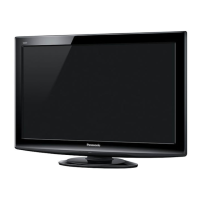
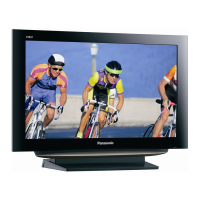

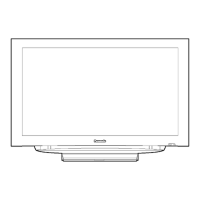
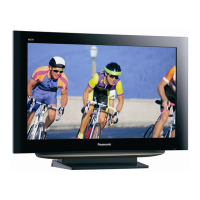
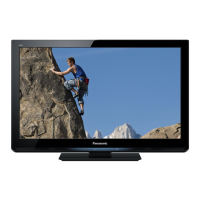
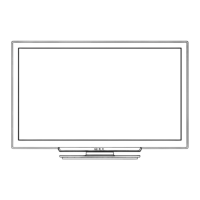

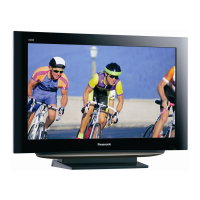
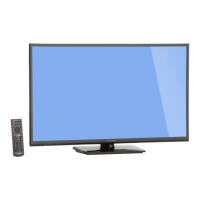
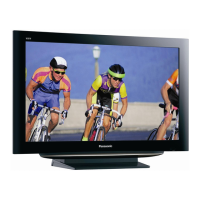
